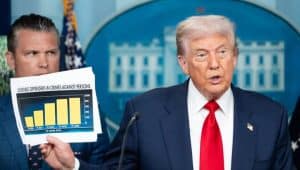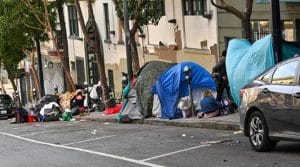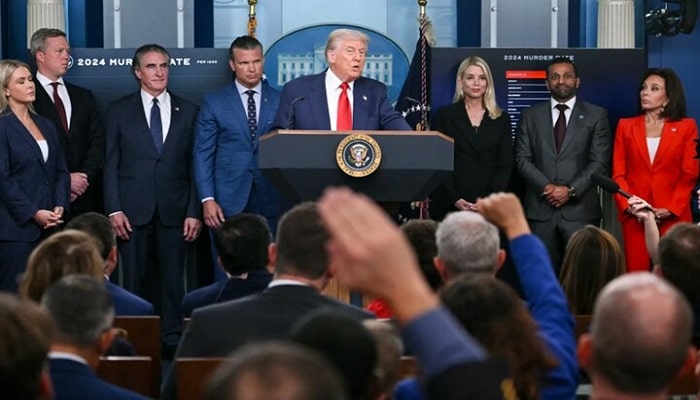PNN – Trump, acknowledging the capital’s shocking crime statistics, spoke of sending the National Guard to the streets in the midst of an economic crisis and social despair; is this show of force the solution to the crisis?
America, in the midst of Donald Trump’s second term as president, is facing a series of domestic crises ranging from urban security and the economy to public trust and the effectiveness of federal institutions.
Trump’s comments about the crime rate in Washington, D.C., and comparing it to cities such as Baghdad and Panama City, once again brought these challenges to the forefront of the news. Emphasizing that the crime rate in the capital is two to three times higher than in some capitals and metropolises around the world, he mentioned deploying the National Guard and placing the Metropolitan Police under federal control as an immediate solution; statements that not only indicate the deep gap between the central government and local management, but have also become a controversial issue in the American political atmosphere.
Immediately after Trump issued the order, US Defense Secretary Pete Hegsett announced in a speech: We are deploying the National Guard to Washington, D.C. They will be pouring into the streets of Washington next week.

However, Trump’s statements are only part of the reality facing America these days. The security crisis in Washington, D.C., along with growing public discontent, economic problems, and social pressures, paints a picture of a country grappling with deep internal divisions.
The wave of distrust in government institutions, the escalation of political disputes, and the decline in citizen satisfaction indicators all indicate that the capital’s security dilemma is not simply a temporary event, but rather a sign of a broader erosion process that is damaging the legitimacy and effectiveness of the federal government.
Washington, D.C., USA, the crime capital of the world
Crime in Washington, D.C. is not limited to murder; armed robberies, street fights, physical assaults, and even organized crime at the neighborhood level are reported regularly. In his speech yesterday, Trump emphasized that do you want to live in such places? I don’t think so. These statements clearly show the depth of the crisis, because the social atmosphere has become such that even the administrative and tourist areas are not safe from the presence of criminal gangs and the occurrence of crimes.
What caused controversy in Trump’s speech was the comparison of Washington, D.C., with cities such as Baghdad and Panama City; areas that have struggled for years with security crises, war, armed terrorist movements, or organized crime. He emphasized that the crime rate in Washington is not only on par with these cities, but is also two to three times higher. This comparison puts the US capital in an even worse position in terms of public safety than areas that have been on the list of the world’s most unsafe places for decades.
In Trump’s view, the security crisis in Washington, D.C., is no longer a local issue but a national one that directly affects America’s image in the world. Therefore, it requires immediate federal intervention. By deploying the National Guard and placing the capital’s police under the control of the Ministry of Justice, he showed that he took the security crisis seriously and intended to contain it with a strict approach.

Multifaceted crises; from a chaotic economy to the collapse of service-relief structures
Beyond the security crisis in Washington, D.C., the United States is facing a series of domestic challenges that have severely strained the country’s economic, social, and political foundations and cast serious uncertainty on the prospects for national stability.
One of the most prominent of these problems is the economic crisis caused by the policies of the federal government. Increased trade tariffs, import restrictions, instability in currency policies and political pressures on the Federal Reserve have caused a slowdown in economic growth. According to official data from the US Department of Labor, the unemployment rate reached 4.2% in July 2025, the highest level in the last two years.
The social crisis and public distrust are deepening alongside the economic crisis. The political divide between Democrats and Republicans has reached its highest level in decades, and the country’s political atmosphere has become highly polarized. According to the latest AP/NORC poll, only 25 percent of American citizens believe that government policies have helped improve their lives, and nearly half said that these policies have harmed them.
In the area of health and health insurance, government policies have caused millions of American citizens to face increased insurance costs and reduced levels of services. The weakening or elimination of parts of the Affordable Care Act has left a significant number of low-income families and seniors without health coverage or forced to pay high out-of-pocket costs.
In large cities, homelessness has also become a full-blown crisis; data from the Department of Housing and Urban Development shows that in 2025, more than 660,000 people in the United States were homeless, a significant increase from the previous year.

This overall picture shows that the domestic crises in the United States are not limited to a specific area, and that a set of economic, social, health, and managerial pressures are shaping a complex and multi-layered situation whose effects are reflected not only within the country, but also in America’s reputation and global standing.

